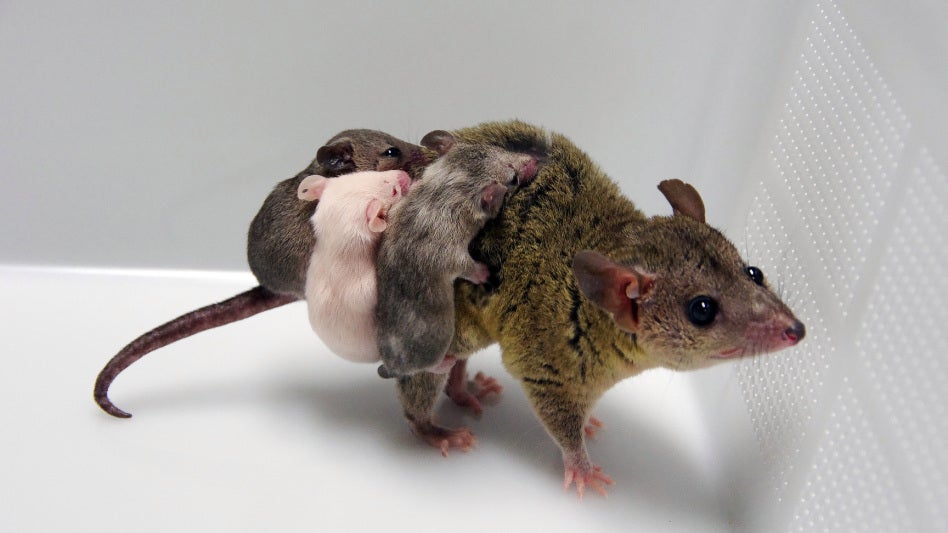The Independent's journalism is supported by our readers. When you purchase through links on our site, we may earn commission.
Scientists in Japan create first genetically modified marsupial
The technology has previously been used on plants and – far more controversially – humans

Scientists in Japan have bred the first ever genetically modified marsupial, breeding a litter of albino opossums using the gene-editing technique CRISPR.
CRISPR, which uses proteins to find, bind to, and modify certain stretches of genetic material, has been around since 2012, and has been used to modify everything from tomatoes to (far more controversially) human embryos.
But up until now, thanks to researchers at Japan’s RIKEN institute, those results have never been replicated in marsupials, the family of mammals that includes possums, kangaroos and koalas, even though scientists had been trying for the last 25 years. That’s because they have a unique biology and are relatively rare in lab settings.
“It’s an accomplishment that I didn’t think would perhaps happen in my lifetime,” says John VandeBerg, a geneticist at the University of Texas Rio Grande Valley, told the MIT Technology Review.
The new research could help scientists get a better understanding of unique marsupial biology, such as the pouches some carry their young in, as well provide insight into human health. Opossums can get human diseases like melanoma, and have more types of immune cells than humans, which could warrant further study.
Achieving the result was not easy though.
Researchers had a hard time inserting the CRISPR into the opossum cells without damaging the embryos, as well as syncing up the exact timing of the procedure. Eventually, they found they could control the lighting in their laboratory to encourage an optimal breeding schedule, and used a tool called a piezoelectric drill, which uses an electric charge, to penetrate cell membranes.
CRISPR, which is short for Clustered Regularly Interspaced Short Palindromic Repeat, is scissor-like technology which uses a highly manipulatable protein that scientists can programme to bind to a specific section of DNA and cut it, which often introduces mutations when the DNA heals and disables the gene involved.
In this case, scientists were able to prove their experiment worked when they knocked out the gene that codes for pigment production, and bred a litter that included albino possums.
While biologists hailed the Japanese experiment, other uses of CRISPR have been more controversial. He Jiankui, a Chinese scientist, was sentenced to three years in prison for using the technology to edit human embryos.
Subscribe to Independent Premium to bookmark this article
Want to bookmark your favourite articles and stories to read or reference later? Start your Independent Premium subscription today.

Join our commenting forum
Join thought-provoking conversations, follow other Independent readers and see their replies